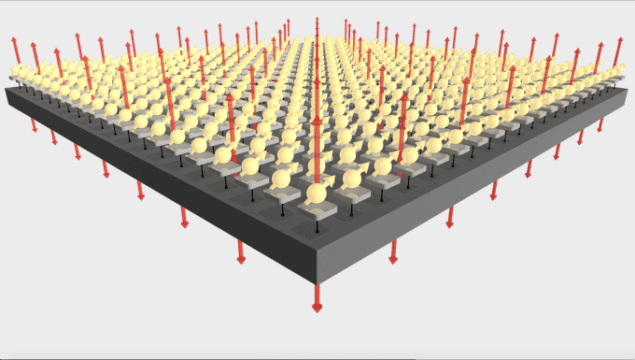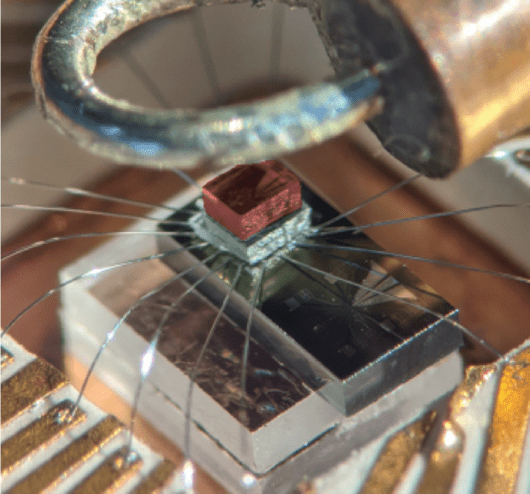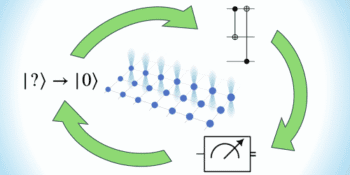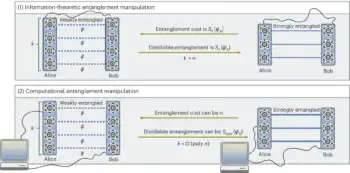
Today’s best quantum computers have fewer than 100 quantum bits (qubits), but future applications of quantum computing may require millions or more. Finding space for that many qubits will be tricky regardless of whether the qubits are made from trapped ions, superconductors, quantum dots or some other technology. Furthermore, as the number of qubits grows, so will the amount of wiring needed to control and connect them. All these wires generate heat, making quantum computers more prone to error.
To address these challenges, Ensar Vahapoglu and colleagues at the University of New South Wales (UNSW), Australia, developed a prototype device that replaces wires with a dielectric resonator located directly above a chip containing silicon quantum dots. These nanometre-sized particles have an outer shell and inner core made of semiconducting material, and they possess properties such as the intrinsic spin of the electron and its associated magnetic moment that enable them to act as qubits.
The UNSW team’s design frees up valuable space while delivering a uniform magnetic field across the chip, making it possible to control the spin of electrons in all the quantum dots simultaneously in a way that requires less power and thus generates less heat.

The novelty of this design lies in the silicon chip technology because the quantum dots form on a structure that is very small and acts as a “nest” for electrons. This gives the researchers direct control over the electrons’ spin properties – so-called spin coherent control – via the uniform magnetic field, which maintains the spin states of the quantum dots.
By constructing this device, Vahapoglu and the team reduce by many orders of magnitude the space needed to both house and manipulate their qubit architecture.
A path toward improvement
To take full advantage of the new qubit design, Vahapoglu and colleagues identify several modifications. One is to use a different substrate for the integrated chip that contains the quantum dots to substantially reduce the power requirement for observing coherent control. Another is to improve the quality factor for the dielectric resonator.
Silicon two-qubit gate achieves 98% fidelity
Implementing these changes will enhance coherence times – that is, the time in which qubits remain in a superposition of all possible states – such that they can realize quantum gate operations using their global control scheme. Once they achieve this, Vahapoglu states, “we believe silicon spin qubits will be an even stronger challenger for the throne of the leading quantum processor platform.”



